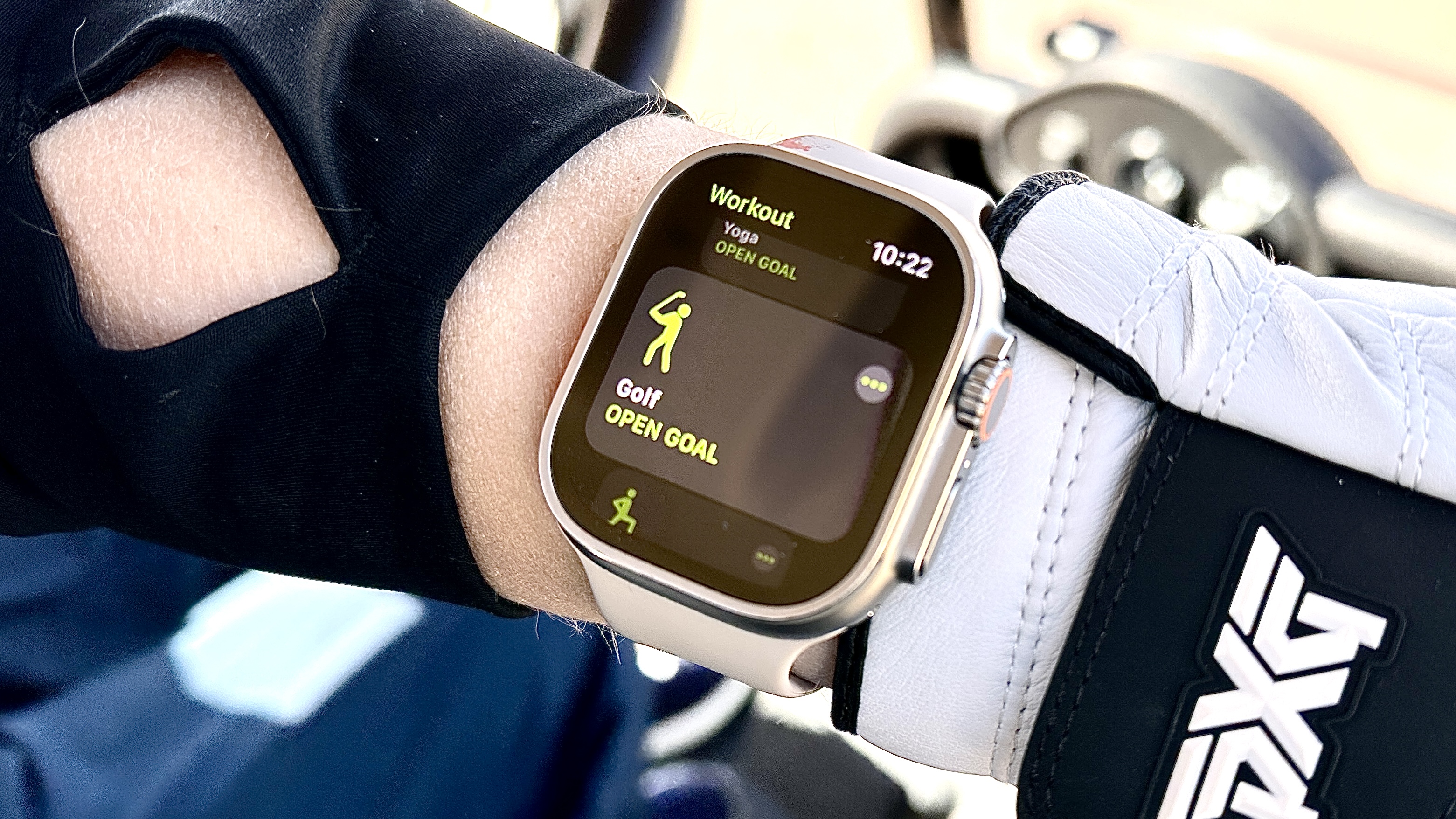
As a beginning golfer, I might not be ready to fully invest in the up-front costs of the game, but that doesn’t mean I won’t use devices I already have to enjoy the experience. For example, I know the Apple Watch isn’t typically touted as a GPS golf watch, but I figured I could use it to track my activity on a recent outing.
Let me make one thing clear: the Apple Watch is not a golf watch. At least, not when you compare it to a device like the Garmin Approach S42, a wearable with built-in software for course mapping, shot-tracking, hazard warnings and scorekeeping. That said, the Apple Watch Ultra tackled one of the biggest reasons I wouldn’t have previously recommended an Apple Watch for golf: battery life.
Continuous GPS and activity tracking is a major battery drain for all the best smartwatches. Golf, which is a sport that relies heavily on exact location and yardages, is aided by rangefinders and GPS watches. More experienced players need to know the distances to the green and to upcoming hazards in order to decide which club to use for any given swing. (But I am not a very experienced player. In fact, I still rely on a caddy or partner to recommend clubs, while also welcoming a bit of trial-and-error.)
The Apple Watch Ultra has a 36-hour battery life, or 60-hour battery life with low power mode enabled. Now, my Cellular connectivity cuts down on those battery life estimates, but I can also make some battery-saving adjustments such as disabling the Always On Display to save juice.
Still, Garmin watches can last anywhere from 8 to 24-plus hours with continuous GPS, making them some of the best running watches. That’s why they’re beloved by marathon runners. When you think about it, an average marathon time of 4 to 5 hours is about how long it takes to complete 18 holes.
Perhaps a regular Apple Watch would struggle to go the distance, but it’s no sweat for the Apple Watch Ultra. In fact, after starting the round on a practically full battery, the watch was down to about 75% by the time I hit the clubhouse. This means I could play approximately four full rounds on a charge, although that doesn’t accommodate regular use or sleep tracking.
Apple Watch vs. Golf watch

Otherwise, the Apple Watch’s native golf workout in the activity app tracked my calories burned and my heart rate. I wasn’t too preoccupied with either, since I don’t golf to replace my workouts (although it’s always fun to close my Apple Watch rings.)
Beyond testing the battery life and seeing those metrics, there isn’t much else the Apple Watch Ultra had to offer for my game. If I wanted to get more golf-related insights or replicate the experience of a dedicated golf watch, I’d need to use one of the best Apple Watch apps for golf.
I’ve seen other golfers who wear an Apple Watch use the Tag Heuer Golf app, which costs $49/year for full Apple Watch functionality. It lets you see courses on your wrist, and on the Apple Watch Ultra’s flat 49mm display, I’m sure it’d look great. Distances to the green and hazards, as well as club recommendations and scoring, would make the Apple Watch a more viable golf watch, too.
As I find my groove on the green, I’ll have to decide whether to try out an Apple Watch-compatible golf app or invest in a true golf watch. On one hand, a golf watch could take my game to the next level. On the other hand (err, wrist), the Apple Watch Ultra is my daily smartwatch, providing me enough connectivity features that it could theoretically replace my iPhone. Do I really want to switch between watches?
Either way, as the best Apple Watch yet in terms of battery life, the Apple Watch Ultra is more equipped than any other Apple smartwatch







